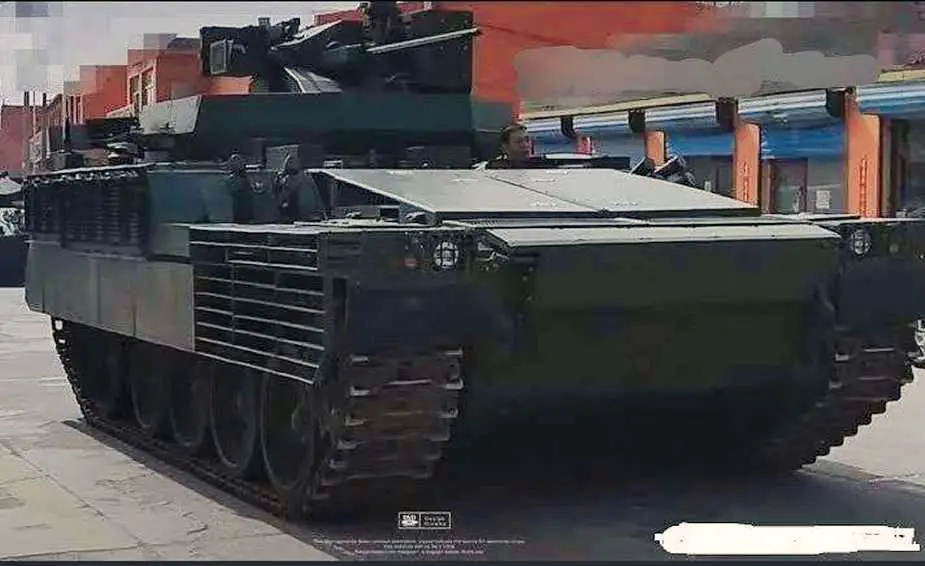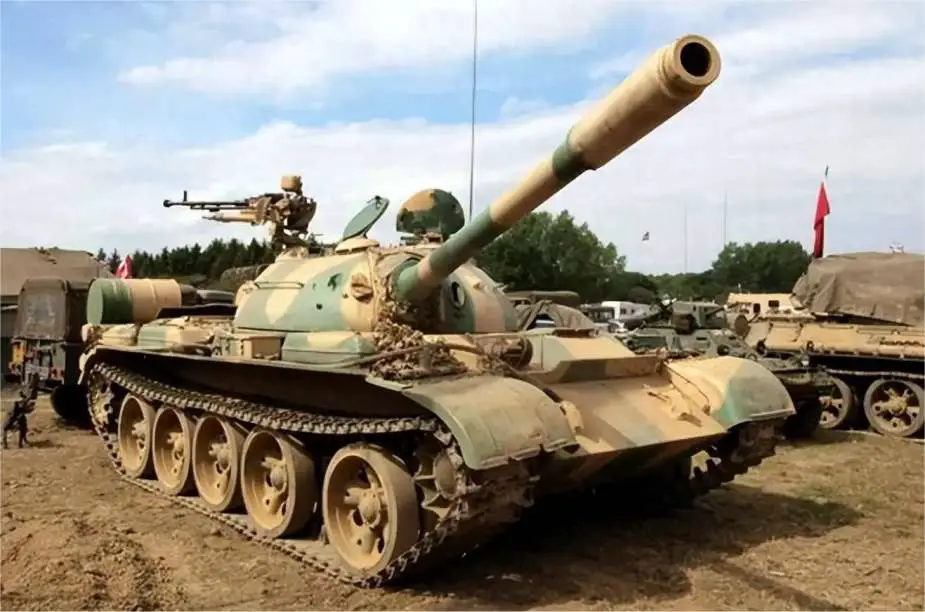China converts Type 59 Main Battle Tank into new Heavy Infantry Fighting Vehicle
According to a Reddit post published on April 15, 2024, China recently developed a new heavy infantry fighting vehicle (HIFV) based on the Type 59 Main Battle Tank. The origin of this unnamed vehicle can be traced back to August 2017 at the Baotou training ground, where Norinco, a leading defense manufacturer in China, unveiled its initial version.
Follow Army Recognition on Google News at this link

There is speculation that the development of this heavy infantry fighting vehicle (HIFV), based on a Type 59 tank, was potentially carried out for an undisclosed international client. (Picture source: Reddit/TankPorn)
The origin of this unnamed heavy infantry fighting vehicle (HIFV) can be traced back to its debut in August 2017 at the Baotou training ground, where Norinco, a leading defense manufacturer in China, first presented the initial version. At the time, it was little more than a functional mock-up, with scant attention from potential foreign buyers. However, by the spring of 2023, an updated iteration of the vehicle was spotted either in Hohhot or Baotou, both significant cities within the Inner Mongolia Autonomous Region, renowned for their ties to China's military-industrial complex.
There is speculation among Chinese military observers that the development of this HIFV may have occurred at Plant No. 617, a facility under the Inner Mongolia First Machinery Group (FIRMACO), a subsidiary of Norinco, potentially for an undisclosed international client.
Inner Mongolia First Machinery Group Co., Ltd., also known as FIRMACO, is a prominent defense manufacturing company in China that specializes in the production of armored vehicles, including several models of main battle tanks like the Type 59, Type 88, Type 96, and MBT-2000. Established in 1954 in Baotou, it operates under the China North Industries Group Corporation (Norinco) and serves as the only production base for main battle tanks in China for both domestic and international demand.
Embracing a strategy of military-civil integration, FIRMACO has expanded its manufacturing portfolio beyond defense equipment to include civilian products such as heavy trucks and railway vehicles. This diversification aligns with China's broader industrial and economic objectives, fostering technological innovation through institutions like the Vehicle Engineering Research Institute and the Beijing Heavy Vehicle R&D Center, which focus on advancing both military and civilian vehicle technologies.
This newly developed and unnamed heavy infantry fighting vehicle (IFV), based on the Type 59 tank chassis, has undergone significant modifications since its initial demonstration in 2017. The hull's reconfiguration includes the relocation of the engine and transmission compartment to the front of the vehicle. This alteration is likely intended to better protect the vehicle's vital components and crew during combat operations. The redesigned combat module of this vehicle is equipped with a 30 mm cannon, potentially modeled after the Russian 2A72, along with a 7.62 mm machine gun and anti-tank guided missiles, providing a range of armaments to engage several types of targets. Additionally, its rear troop compartment, equipped with an aft hatch, facilitates the deployment of infantry under protective cover.
The Chinese Type 59 tank, based on the Soviet T-54A, has been operational since its debut in 1959. This main battle tank is armed with a 100mm rifled cannon, and has received multiple updates over its service life. Notable modifications in variants like the Type 59-II include the installation of a 105mm gun, improved fire control systems, and reinforced armor, some versions of which incorporate explosive reactive armor. The tank is powered by a 520 horsepower diesel engine, achieving speeds up to 50 km/h and a maximum range of 600 km with additional fuel storage. The Type 59 has also served as a base model for further Chinese tank developments and has been widely exported.
Historically, infantry fighting vehicles like the Soviet BMP series and the American M2 Bradley were designed with an emphasis on mobility and firepower, often at the expense of protective armor. These design choices were aligned with the strategic demands of the Cold War era, favoring speed and the ability to traverse water. The contemporary trend, however, is shifting towards more heavily armored IFVs capable of engaging in direct combat with heavily armored adversaries, influenced by the balance of the so-called "Iron Triangle" of mobility, firepower, and protection.
Nations like Germany and Russia have been key in developing these new IFVs. Germany's Lynx KF41 showcases modularity, capable of being configured for various roles such as command and control or reconnaissance, tailored to modern military needs. Russia developed several vehicles, including the Russian-French ATOM IFV project, which featured enhanced armor and a robust 57mm automatic gun, and the T-14 Armata, based on the same platform that the T-14 Armata Main Battle Tank. Similarly, Israel's Namer, based on the chassis of the Merkava tank, is another example of a heavy IFV designed with substantial protection in mind, equipped to handle modern threats with advanced defense systems and significant firepower.

The Chinese Type 59 tank, based on the Soviet T-54A, has been operational since its debut in 1959, is armed with a 100mm rifled cannon, and has received multiple updates over its service life. (Picture source: Chinese social media)
- Hits: 8423
















